Syn.: Gyromia acuminata Raf., Gyromia cuneata Raf., Gyromia virginica (Christm.) Nutt., Gyromia virginica var. picta Nutt., Medeola verticillifolia Stokes, Medeola virginica Christm.
Family: Liliaceae Juss.
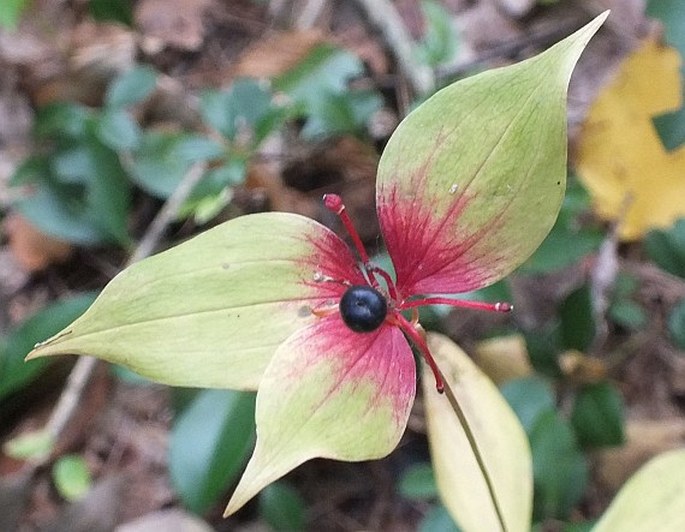
Distribution: North American species occurring in the eastern part of the continent, from Ontario and Quebec and in US from Minnesota southward into Louisiana and northern Florida.
Ecology: Found in open, moist to dryer woods, usually in semi-shade in soil rich in leafmold, at elevations from sea level to 1600 m. Blooms in late spring and early summer.
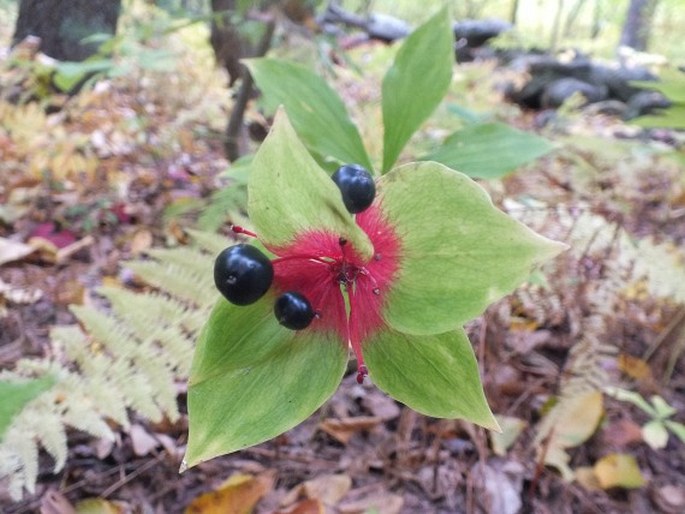
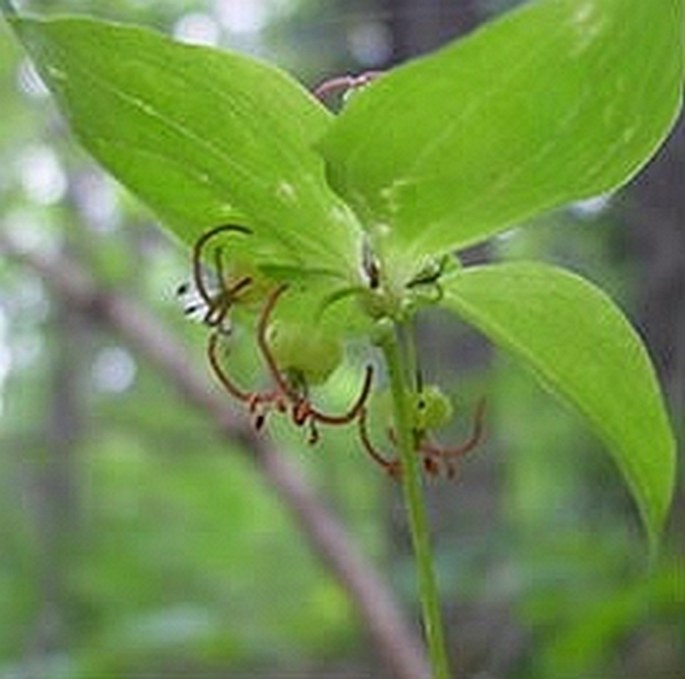
Description: Perennial herb, 20–90 cm tall, from short, 3–10 cm long and 1 cm thick rhizome. Stem is erect, green, round, unbranched with 1–2 whorls of leaves, non-flowering stems have only one whorl, stem white-woolly when young, 1–3 deciduous bracts below the lower whorl of leaves. Leaves sessile or short-petiolate, 5–10 in lower whorl, elliptic to ovate, 6–16 × 1.5–5 cm, sharply acuminate, smooth margins, darker green on top than bottom, 3–5 prominent veins. In flowering plants the upper whorl consists of 3–5 leaves, 2.5–5 × 1.5–4 cm. Inflorescence is an umbel of 3–9 flowers, sessile to the upper whorl of leaves, with pedicels of about 2.5 cm long; flowers although a part of an umbel, usually hang down below the whorl of leaves, about 16 mm across, 6 yellowish green tepals, curved back, 6 stamens and 3 long recurved reddish brown stigmas. Fruit is a berry and while developing the pedicels bearing the berries become erect and bases of top leaves turn purplish red. Berries are dark purple to blue black, round, 6–10 mm across, containing several seeds of about 3 mm.
Threat and protection: States of Florida and Illinois list this species as endangered.
Usage: The cucumber-like tasting rhizome is edible.
Note: The genus is monotypic.
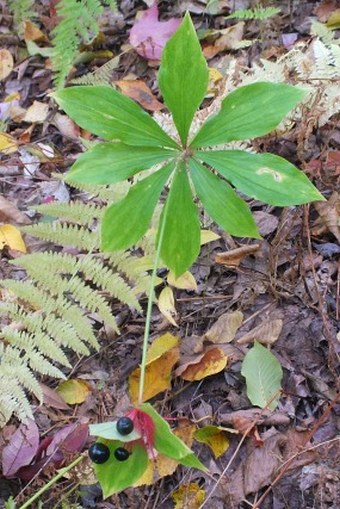
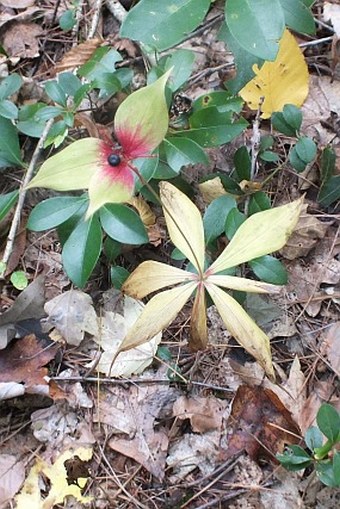
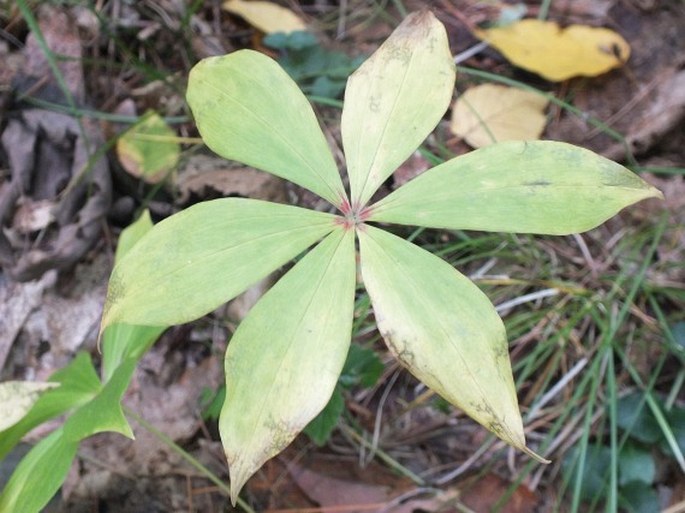
These images were taken in USA, Massachusetts, Worcester (October 4, 2015). Photo of flowering plant by Arthur Haines, New England Wild Flower Society.


